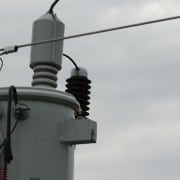The pace of change
Few issues seem more polarizing than climate change and renewable energy — even when trying to reach a level of mutual satisfaction. A point I’ve tried to make over the past few months is that you can’t effect change overnight. What I’ve discovered is that readers often interpret my comments through the prism of their own beliefs. I’m not being critical; that tends to occur when we’re passionate about an issue.
Some co-op members aren’t pleased when we voice support for coal-fired generation. One particular reader classified it as unrealistically clinging to the past. Some members aren’t pleased about our support for solar and wind power when we have abundant gas, oil and coal resources in the U.S.
Our position is not about mandating a particular power source but a call for diversity and stability. We don’t hate coal; we don’t want to wreck the environment. Our mission, quite simply, is to keep the lights on. And to do so safely and efficiently.
We make economic-based decisions grounded in reality, not partisanship. Over the years, we’ve had disagreements on energy policy with both sides of the aisle. Principled disagreement doesn’t equate with personal dislike or political opposition.
Some policy shifts are minimally disruptive. But when policy shifts dictate changing energy sources, it’s going to take a long time and a lot of money. And it’s not going to be happen overnight. For example, it can take more than a mile for a fast-moving supertanker to stop and turn around. It’s a matter of physics, not desire.
If we were to immediately shut down all of the coal plants in the U.S., it would make a negligible change in worldwide carbon dioxide levels. We’d also be in the dark. Yet, over the past several years, older coal plants have been shuttered. Huge financial investments have been made to scrub the emissions of those remaining. Investments have been made in renewable energy sources where and when it was economically wise.
Our power supplier, the Tennessee Valley Authority, has moved from having coal represent a majority of its generation to a long-term goal of a mix that is 40 percent nuclear, 20 percent coal, 20 percent natural gas and 20 percent hydropower and renewable sources.
An “all-of-the-above” energy policy isn’t just a slogan. It’s not “code” that means we don’t support renewable energy. Each power source has benefits and drawbacks. Fuel costs vary. Some sources are readily available; some are not. Any type of generation depends on transmission lines to carry the electricity from the source to your local power company. Just planning and building those lines can take years to accomplish.
The sun is free, but solar power isn’t. Wind power is a great option, but the wind does not blow in all the right places at all the right times. Nuclear power is dependable and a steady, long-term power source. It also creates long-term waste problems. Coal is a plentiful and cheap power source. Yet, as we’ve seen in the Valley, it isn’t easy to dispose of coal ash, and we have yet to master the handling of carbon dioxide. Hydropower is inexpensive, clean and totally dependent on the weather. Natural gas burns cleaner than coal, but when overused, supplies dwindle and prices increase.
As we’ve seen this past winter, there are times when all are needed.
Take your pick about which of those sources you dislike. But, if you remove it from the mix, do you have a workable plan to replace it? Changing policy is easy; making the changes required by that policy is not. As frustrating as the pace of change is for some, a change of pace on this level takes time and care.









Leave a Reply
Want to join the discussion?Feel free to contribute!